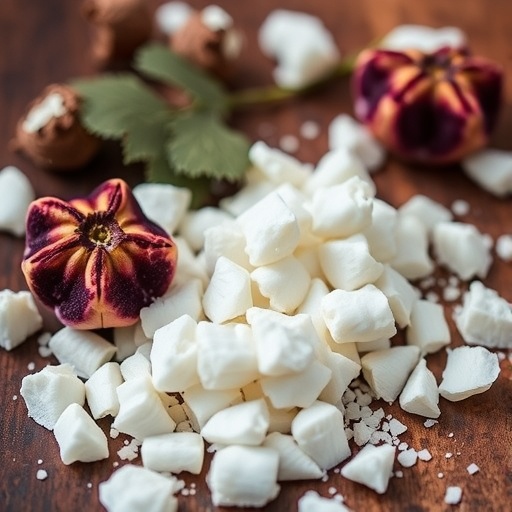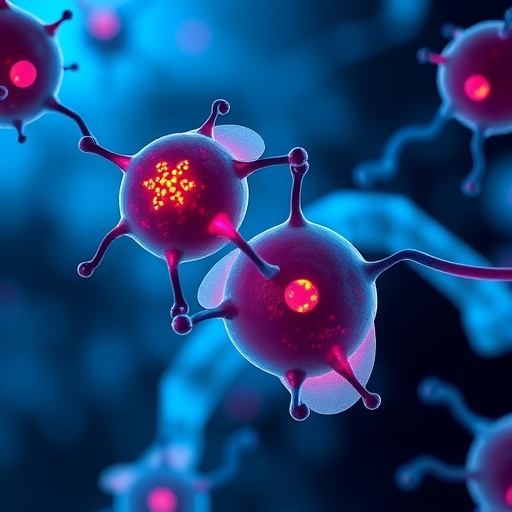Cancer cells that develop resistance to drugs, pay a price for this, by simultaneously developing a new vulnerability. If this acquired vulnerability can be identified, it may be exploited clinically. A team of cancer researchers, led by Rene Bernards of the Netherlands Cancer Institute and Oncode Institute, now exposed this acquired vulnerability in melanoma that has developed resistance to a targeted therapy with BRAF-inhibitors. The team then developed a new therapeutic strategy to selectively kill the drug-resistant cancer cells.
Do not fight resistance, but exploit it
One of the greatest obstacles in treating cancer is the rapid emergence of therapy resistance. However, when cancer cells develop drug resistance, they also acquire a new vulnerability, which is, in Darwinian terms, the fitness cost that comes with adapting to a new regime. If this newly acquired vulnerability can be exposed, it may be exploited clinically to keep the cancer at bay for a longer period, according to cancer researcher Rene Bernards.
Professor Bernards: 'Drug resistance seems inevitable because tumours are constantly adapting. For over 40 years, we have been devising ways to prevent drug resistance in cancer. Now I think: let's just accept that this is the way it is, and go and see if we can find the new vulnerability associated with resistance. Then we can exploit this sensitivity clinically and keep the cancer under control for a longer time.'
Melanoma
Bernards and his team were able to expose this new vulnerability in melanoma that has developed resistance to treatment with a BRAF inhibitor: a targeted therapy that blocks a signalling pathway in the cancer cell through which it gets the message to keep on dividing. This is due to a mutation in the BRAF gene, which plays an important role in cell division in healthy cells. More than half of all melanoma patients have a mutation in this BRAF gene. For these people, the BRAF-inhibitor does its job and tumour growth stops. But within a few months the tumour cell adapts the original signalling pathway becomes active again, and even hyperactive, so that all lights are green to start growing again.
Reactive oxygen species cause DNA damage
The key question is: what price does melanoma pay for resistance? In the lab, the researchers made melanoma cells resistant to the BRAF inhibitor and saw that the hyperactive resistant melanoma cells produced large amounts of reactive oxygen species. Cancer cells that were still sensitive to the drug did not do this.
Reactive oxygen species are – both in healthy cells and in cancer cells – a double-edged sword. They play an important role in transmitting signals in the cell, but if their concentration becomes too high, they cause DNA damage and the cell may stop dividing. Also in the Bernards experiment, the abundance of free radicals caused the resistant melanoma cells to stop dividing. However: they did not die.
Last push towards cell death
Bernards: 'Then we thought: suppose we can give those hyperactive resistant tumour cells the last push towards cell death, by allowing them to produce even more free radicals.' In the lab, this worked perfectly by exposing the cells to a substance that stimulates the production of free oxygen radicals. Only the resistant tumour cells died; tumour cells that were still sensitive to the original drug remained alive.
Tumours shrink
But does this also work in a living organism with melanoma? Bernards tested this on mice with an existing drug, vorinostat, which is known to stimulate the production of free oxygen radicals. Vorinostat has been used in the clinic for 15 years, including for a rare form of lymphoma, and is not very harmful to the patient. In mouse models, the researchers did indeed see tumours shrink under the influence of vorinostat.
Quickly onto a clinical trial
This gave hope, and because it was an approved and safe medicine, Bernards could then, together with physician Jan Schellens and hospital pharmacist Jos Beijnen, quickly start a clinical proof-of-concept trial among a very small number of patients of the Netherlands Cancer Institute. The concept also appeared to work in patients.
One-two punch strategy
This laid the foundation for a new therapeutic strategy. Step one: treat patients with BRAF-mutated melanoma, as usual, with signal pathway inhibitors. Step two: when the tumour has become resistant, stop giving those inhibitors and immediately treat the patients with vorinostat to kill the resistant cancer cells. For boxing enthusiasts: a 'one-two punch' approach. A hit from the left, immediately followed by one from the right.
"It is not a combination drug," emphasizes Bernards, who has made a name for himself with smart combinations of drugs. 'It is very important that you first stop the signalling pathway inhibitors because they suppress the free radicals and thus eliminate the effects of vorinostat.'
Getting new cancer drugs quickly and cheaply to the clinic
Bernards is happy with his scientific research, which resulted in a well-founded new strategy to treat melanoma that has become resistant. But he is at least as happy with the speed with which a lab study resulted in a clinical trial. 'It is unique that a clinical trial has already been part of a fundamental scientific publication. This is how we, increasingly, want to do it.'
And moreover, the costing details are favourable. Vorinostat is a notoriously expensive drug, but hospital pharmacist, Beijnen, can make it himself in the pharmacy of Netherlands Cancer Institute. This is permitted for a clinical trial, and there is also no longer a patent on the American medicine. Bernards: 'That is why this research fits so well with the new Oncode Institute, whose mission it is to bring new treatments to the patient quickly and cheaply.'
Follow-up step 1: nip resistance in the bud
Two follow-up studies are now planned. The first is a clinical follow-up study, under the umbrella of Oncode Institute. Bernards: 'In our clinical proof-of-concept study, we gave the patients BRAF inhibitors for one year, until the cancer had become resistant. We then exterminated the resistant cells in one month with vorinostat. Now that we know that this principle works, we want to go a step further: we are going to check the patients' blood every month for mutations in the tumor DNA. As soon as we see a trace of resistance, we briefly treat with vorinostat to nip the resistance in the bud. Then, we again transfer to the BRAF inhibitors, until we see resistance emerge again. With such a pulse-treatment, we think we can keep the cancer under control longer. '
Follow-up step 2: find the Achilles heel of other resistant cancers
In addition, Bernards will soon start a major study in which he wants to induce and exploit senescence in cancers other than melanoma. He has just been informed that the European Research Council will invest 2.5 million Euros in this, in the form of an ERC Advanced Grant.
###
Publication:
Wang e.a., An Acquired Vulnerability of Drug-Resistant Melanoma with Therapeutic Potential, Cell, 2018-05-10 (advanced online publication). https://doi.org/10.1016/j.cell.2018.04.012
Media Contact
Hilje Papma
[email protected]
31-205-126-284
http://www.nki.nl
http://dx.doi.org/10.1016/j.cell.2018.04.012




